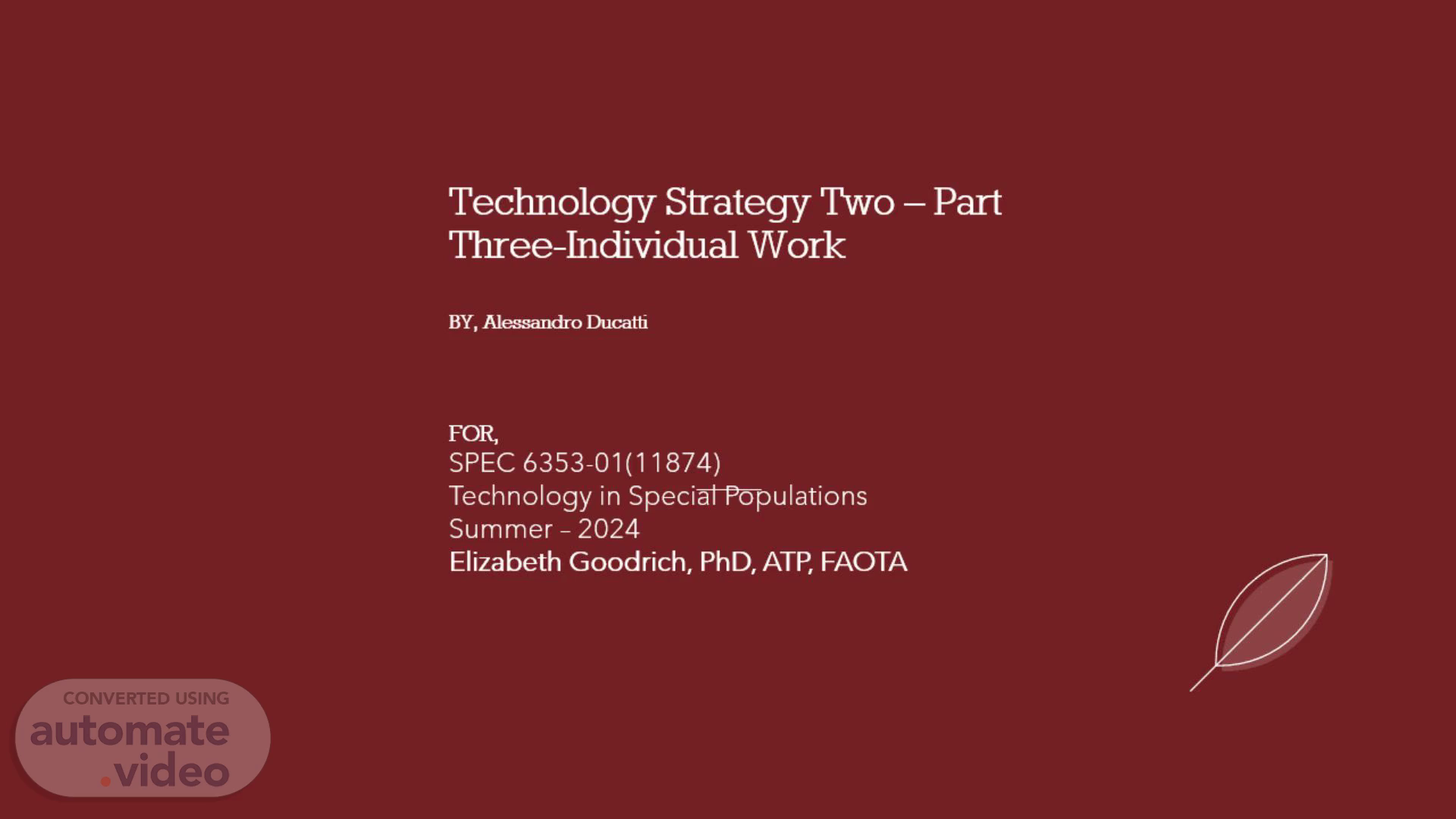Page 1 (0s)
[Audio] Technology Strategy Two – Part Three-Individual Work BY, Alessandro Ducatti FOR, SPEC 6353-01(11874) Technology in Special Populations Summer – 2024 Elizabeth Goodrich, PhD, ATP, FAOTA.
Page 2 (23s)
[Audio] How do UD, UDL, and AT meet the needs of individuals with disabilities? Universal Design (UD) Understanding UD: Universal Design is about creating products and environments that are usable by all people, to the greatest extent possible, without the need for adaptation. UD vs. UDL: Unlike UDL, which focuses on educational strategies, UD applies broadly to physical and digital environments to ensure general accessibility. UD vs. AT: UD differs from AT in that it involves designing environments to be inherently accessible to all, whereas AT provides specialized devices tailored to individual needs. Assistive Technology (AT) Understanding AT: Assistive Technology consists of devices or systems that help individuals with disabilities perform tasks that might otherwise be difficult or impossible. AT vs. UDL: AT differs from UDL in that it focuses on providing personalized tools for individuals, whereas UDL creates adaptable learning environments for a diverse range of learners. AT vs. UD: Unlike UD, which aims for universal accessibility in design, AT offers specific solutions to address particular disabilities and enhance individual capabilities. Universal Design for Learning (UDL) Understanding UDL: Universal Design for Learning is a framework for creating flexible educational environments that accommodate diverse learners by providing multiple means of representation, expression, and engagement. UDL vs. UD: UDL differs from UD in its focus on education, providing varied teaching methods to support learning, whereas UD focuses on designing accessible environments for all. UDL vs. AT: UDL creates inclusive educational strategies for all students, while AT provides individualized tools and technologies to support specific disabilities..
Page 3 (2m 37s)
[Audio] Similarities and Intersections UD and UDL: aim to create inclusive environments, with UD focusing on physical spaces and products, and UDL on educational practices. Both promote accessibility and usability for a wide range of people. According to "Chapter Six: Designing for All," integrating UD principles in educational settings aligns with UDL's goal of making learning accessible to everyone (Meyer, Rose, & Gordon, 2014). UD and AT: both strive to enhance accessibility, but while UD integrates accessibility into the design of environments and products, AT provides specific tools to address individual needs. UDL and AT: intersect in their goal to support individuals with disabilities in educational settings, with UDL offering flexible teaching strategies and AT providing specialized tools to facilitate learning..
Page 4 (3m 40s)
[Audio] REFERENCES Meyer, A., Rose, D. H., & Gordon, D. (2014). Universal Design for Learning: Theory and Practice. CAST Professional Publishing..
Page 5 (3m 56s)
[Audio] Thank you Alessandro Ducatti 343-321-7000 aducatti@galenaparkisd.com.
